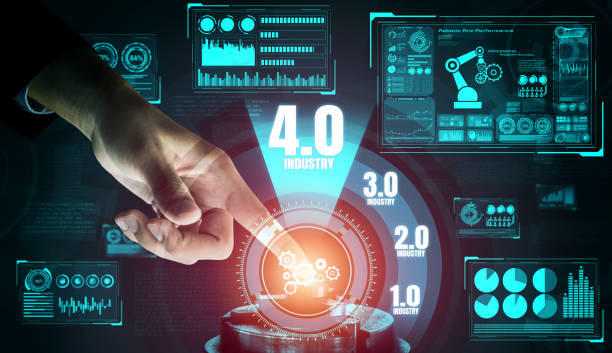
Technology is rapidly changing. One of the markers is the Fourth Industrial Revolution, 4IR, or Industry 4.0. Notably, different manufacturers are integrating technology in their processes for flexibility, agility, efficiency, and reliability. However, what does Industry 4.0 mean, and how does it benefit companies? Please read on to find out.
Industry 4.0; What is It?
Industry 4.0, is a term that has been around for a while. However, what does it mean? This is a term depicting the revolutionizing of the manufacturing processes in companies; the improvement, distribution, and flexibility of their products, thanks to the rise of digital industrial technology. Today, manufacturers are taking advantage of industry 4.0 in highly productive ways, ensuring they incorporate AI technology, Internet of Things (IoT), analytics, and cloud computing in their manufacturing operations.
Interestingly, before Industry 4.0, there were other industrial revolutions. Why not have a look at this history? The first industrial revolution began in the late 18th century, characterized by the use of water and steam power for mass production.
On the other hand, the second in the 19th century included the use of gas, oil, and electricity. Communication was also advanced since the telephone and telegraph were used. The third industrial revolution was in the 20th century. IT systems and automation was born during the period and there were Computers, advancement in telecommunication, and data analysis as the major features.
Currently, we are in the fourth industrial period, industry 4.0, where there is an increase in automation, AI technology, use of smart machines and smart factories, cognitive computing, cloud computing, cyber-physical systems (CPS), industrial internet of things (IIoT) and internet of things (IoT). All these make it possible to experience efficiency in goods production. Additionally, the employment of smart factories improves flexibility for manufacturers to cater to customer demands better.
The automation of manufacturing processes in industry 4.0 brings in this new trend. Also, the system includes the use of wireless connectivity and sensors to visualize and monitor the production process and all that is involved. There is also the employment of computer-based algorithms that help in monitoring and controlling machinery and vehicles. With all the automation processes in the manufacturing procedure by the use of industry 4.0, is there a way through which industries benefit?
Read: Total Quality Management (TQM): How does it help businesses?

How Does Industry 4.0 Benefit Companies?
As noted earlier, Industry 4.0 involves a lot of automation in manufacturing procedures. This current industrial revolution has completely revolutionized the monitoring, distribution, and analysis of the supply chain. Thankfully, people and companies alike can experience the benefits of industry 4.0.
The following are some of the ways through which companies can benefit from industry 4.0;
- Improvement in Automation and Productivity
Unlike in the previous industrial revolution stages, industry 4.0 is bringing rapid changes that are enhancing the efficiency in the production of goods. You can produce more goods in a short time and have proper resource allocation. This will allow you to easily package and ship to customers on time.
Also, this current industrial revolution makes it possible for businesses and companies to have an automated, or semi-automated decision-making process. They can make data-driven decisions. Therefore, regardless of the operation taking place in the manufacturing industry, a company can trust it will have a more accurate forecast on decisions that will affect its operations.
- Improved Efficiency
The technologies related to industry 4.0 bring in a wave of efficiency in operations in a company. Therefore, embracing the fourth industrial revolution technologies will allow you to make more products, spend less time and have lots of automation in tracking, reporting, and decision making.
Also Read: Free Company: How to Register a Company for Free
- Exploring New Business Models
New companies have numerous opportunities with the introduction of industry 4.0 in manufacturing. This industrial revolution brings about different solutions that can help companies grab whatever chances and new opportunities available in the market.
Moreover, with industry 4.0 companies can give new business models a try. The beauty is in the bridging of gaps in the supply chain and how efficient operating in the market is with the use of this current industrial revolution. Also, it is important to note how well industry 4.0 helps in reducing costs. This, therefore, allows a company to confidently venture into a new business space.
- Improved Resiliency and Agility
There are changes in the market or economy in which a company operates. When it is not prepared well enough, its supply chain can be affected. Thankfully, with industry 4.0, it can cultivate resiliency to withstand anything the market or economy brings its way.

- Improving Communication and Collaboration
Companies comprise numerous individuals and departments, all of which need to properly communicate and collaborate to better run the operations in a company. Others incorporate offices in different localities or even continents. When you incorporate the technologies of industry 4.0, the business processes, production lines, and departments will communicate irrespective of the location or difference in time zones.
Therefore, with the use of industry 4.0 in such collaboration and proper communication, the different individuals and departments can share knowledge. You can decide to have a sensor on a machine disseminate information to all departments of your company. What’s more, you can automate the process from one machine to the next or from one system to the other.
Read: What Factors Make a Business Successful?
- Embracing Sustainability
Today, customers realize their environmental objective, and therefore, do a lot to ensure whatever product they consume is not harsh to the environment. Therefore, such clients would opt for sustainability and are willing to pay for the value.
The good thing is that the trend can help a company go green, and meet the needs of clients who want such products. So, as a company, you can maintain your goals such as making a profit and enhancing scalability.
- Offering Improved Customer Experience
A company that employs industry 4.0 in its manufacturing operations offers its customers a great experience. It will help a company improve the quality of services it offers to consumers. Also, you can get solutions to their problems quicker. Moreover, since you will have improved quality products that are available and delivered on time, consumer satisfaction becomes easier.
Conclusion
Industry 4.0 has brought a change in the manufacturing industry. The use of these technologies has brought in automation and enhanced productivity. Also, companies can improve their efficiency, resiliency, customer experience, and even embrace sustainability. Therefore, each company should incorporate industry 4.0 into its operations for the benefit.
Related articles you would be interested in:
8 Advantages of Renting a company or a Business Service




